NVIDIA ir jos partneriai pasisakė apie RTX 3080/3090 nestabilumo problemas
NVIDIA oficialiai pasakė, kad RTX 3080/3090 nestabilumą nebūtinai lemia parinktų kondensatorių dizainas. Be to, SP-CAP ir MLLC kondensatorių grupavimas nebūtinai nusako vaizdo plokštės kokybę, nes tai gali būti partnerių sukurto dizaino dalis. NVIDIA visai neseniai išleido „GeForce 456.55“ tvarkykles, kurios sprendžia RTX 3080/3090 nestabilumo problemą. Tai padaryta paprasčiausiai pakoregavus boost algoritmo kreivę. Naują kreivę su sena galite lengvai palyginti „Guru 3D“ ekranvaizdžiuose, ištrauktuose iš „MSI Afterburner“ programėles.
Dėl šios problemos pasisakė ir NVIDIA partneriai. Pavyzdžiui, ASUS sako, kad jie SP-CAP tipo kondensatorius pakeitė į MLLC tipo kondensatorius pastebėję, kad tai leidžia padidinti spartinimo potencialą. Dėl to buvo pakeistas kondensatorių dizainas iš SP-CAP į visus MLLC tipo kondensatorius. Kai kurios senos nuotraukos dar yra ASUS tinklapyje, bet greitu metu jos bus pakeistos.
Gamintojų pareiškimai. (paimta iš „Videocardz“ (neredaguota))
NVIDIA
Update: a short statement was provided to Brad Chacos from PC World:
Regarding partner board designs, our partners regularly customize their designs and we work closely with them in the process. The appropriate number of POSCAP vs. MLCC groupings can vary depending on the design and is not necessarily indicative of quality.
COLORFUL
The manufacturer was the first to report on an issue to the press. Review samples that had already been sent out, were later recalled.
EVGA
Recently there has been some discussion about the EVGA GeForce RTX 3080 series.
During our mass production QC testing we discovered a full 6 POSCAPs solution cannot pass the real world applications testing. It took almost a week of R&D effort to find the cause and reduce the POSCAPs to 4 and add 20 MLCC caps prior to shipping production boards, this is why the EVGA GeForce RTX 3080 FTW3 series was delayed at launch. There were no 6 POSCAP production EVGA GeForce RTX 3080 FTW3 boards shipped.
But, due to the time crunch, some of the reviewers were sent a pre-production version with 6 POSCAP’s, we are working with those reviewers directly to replace their boards with production versions.
EVGA GeForce RTX 3080 XC3 series with 5 POSCAPs + 10 MLCC solution is matched with the XC3 spec without issues.Also note that we have updated the product pictures at EVGA.com to reflect the production components that shipped to gamers and enthusiasts since day 1 of product launch. Once you receive the card you can compare for yourself, EVGA stands behind its products!
— Jacob Freeman, EVGA Forums
ASUS
ASUS released a statement shortly after our article was published:
All retail ROG Strix and TUF Gaming GeForce RTX 3080 and 3090 graphics cards use only MLCC capacitors for decoupling close to the GPU.
During development, we discovered the improvement this makes to RTX 3090 and 3080 overclocking headroom, so we made specification changes before we started shipping cards to reviewers and customers. Please note that some of the product images used on etail sites and our product pages were from early development samples, so are not final. All images will be updated soon.
Please bear with us!
MSI
MSI became aware of reports from customers, reviewers, and system integrators that there may be instability when GeForce RTX 30 Series graphics cards core clocks exceeded a certain amount. The latest GeForce driver (456.55) includes fixes for the issue. As such, MSI recommends owners of GeForce RTX 30 Series graphics cards update to the latest driver release which can be downloaded from the NVIDIA GeForce website.
MSI stands behind its design decisions for its GeForce RTX 30 Series graphics cards catalog which consists of GAMING models and VENTUS models. MSI utilizes a mixed capacitor grouping in its designs to benefit from the strengths of both SP-Caps and MLCCs. All MSI GeForce RTX 30 Series cards that have shipped out since the beginning of production, which include media review samples, feature the PCB configurations as shown in the updated images below. MSI would like to express its appreciation to customers, reviewers, and system integrators that raised awareness to the issue, and to NVIDIA for the cooperation in quickly resolving the problem.
ZOTAC
GALAX (machine translation from Chinese)
About the SP-CAP capacitors and MLCC capacitors of GALAXY RTX 3080/3090 products
Dear player friends:
Hello, everyone. Recently, many users have come to inquire about the specific usage of the capacitors on the back of the GALAXY RTX 3080/3090 series of graphics chips. After verification, about the RTX 3080/3090 released by GALAXY. The capacitors used on the back of the model chip are as follows:
1. GALAXY RTX 3080 Heijiang/Metal Master product, the number of SP-CAP capacitors on the back of the chip: 5, the number of MLCC capacitors: a set of 10. This version is currently on sale and is the original commercial version.
2. GALAXY RTX 3090 General/Metal Master product, the number of SP-CAP capacitors on the back of the chip: 4, the number of MLCC capacitors: two groups of 20. This version is currently on sale and is the original commercial version.
3. GALAX RTX 3090 GAMER trial production samples, currently only 6 pieces are in the hands of the media and KOL. The first batch of this sample uses 6 SP-CAP capacitors. After confirmation, the GAMER products officially produced and sold will be used for capacitor materials. Make optimization improvements. Note: This product is not currently on sale.
I am very grateful to the players and friends for their support and love to GALAXY. GALAXY is also consistent in its pursuit of product quality. It is our glorious mission to provide you with better and stronger hardware. In addition, the current full range of GALAXY graphics card products support three-year warranty and personal warranty service. If you have other doubts or questions, please feel free to leave us a message to discuss, thank you!
Source
GAINWARD (machine translation from Chinese)
Announcement on SP-CAP Capacitors and MLCC Capacitors of Gainsun 30 Series Graphics Card Products
Dear Gainward consumer players:
Thanks to the friends who bought and supported Gainward. Recently, we received the voice of market players’ inquiries. Many players are very concerned about our company’s just released 30 series products. Regarding the specific usage of the capacitors on the back of the chip, we hereby explain the situation:
All the RTX 3080 10GB graphics cards released by Gainward currently use 5 SP-CAP capacitors on the back of the chip and 10 MLCC capacitors. The versions currently on the market are all the original commercial versions.
All the RTX 3090 graphics cards released by Gainward currently use 4 SP-CAP capacitors on the back of the chip and 20 MLCC capacitors. The versions currently on the market are all the original commercial versions.
As a long-term AIC partner of Nvidia, Gainward has always been adhering to the product standard to design and produce completely according to Nvidia’s requirements. Therefore, currently players are concerned about the problem of capacitors and new product failures on the Internet. Currently Gainward has not generated such feedback. .
In addition, all Gainward graphics card products support three-year warranty and personal warranty service. Thank you consumers and players for your support and love to Gainward.
Source
INNO3D
GIGABYTE
In response to the recent reports speculating that the use of POSCAP capacitors on the GeForce RTX 3080/3090 graphics cards could lead to stability issues and crashes, we would like to clarify the issue with the following statement:
1. It is false that POSCAP capacitors independently could cause a hardware crash. Whether a graphics card is stable or not requires a comprehensive evaluation of the overall circuit and power delivery design, not just the difference in capacitor types. POSCAPs and MLCCs have different characteristics and uses, thus it is not true to assert that one capacitor type is better than the other.
2. The GIGABYTE GeForce RTX 30 graphics cards are designed in accordance with NVIDIA specifications, and have passed all required testing, thus the product quality is guaranteed. GIGABYTE GeForce RTX 3080/3090 GAMING OC and EAGLE OC series graphics cards use high-quality, low-ESR 470uF SP-CAP capacitors, which meet the specifications set by NVIDIA and provide a total capacity of 2820u in terms of GPU core power, higher than the industry’s average. The cost of SP-CAP capacitors is not lower than that of MLCCs. GIGABYTE values product integrity highly and definitely does not reduce costs by using cheap materials.
NVIDIA has released a driver (version 456.55) on September 29, 2020 that improves stability. Users are advised to update to the latest driver for optimized performance. For users who encounter power-related issues with GIGABYTE GeForce RTX 30 series graphics cards, GIGABYTE will provide product replacement, free of charge.
GIGABYTE has been constantly improving and optimizing product quality, especially in terms of thermal designs, to provide the best gaming experience to the consumers for decades. For the latest AORUS GeForce RTX 30 graphics card series, we have also paid extra attention to the cooling performance and introduced industry-leading solutions such as MAX-Covered Cooling to ensure that the operation of each component is stable.






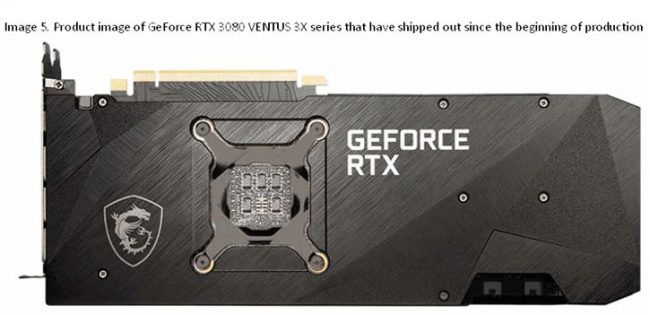

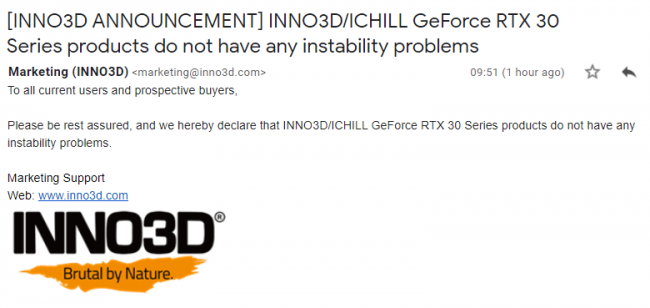


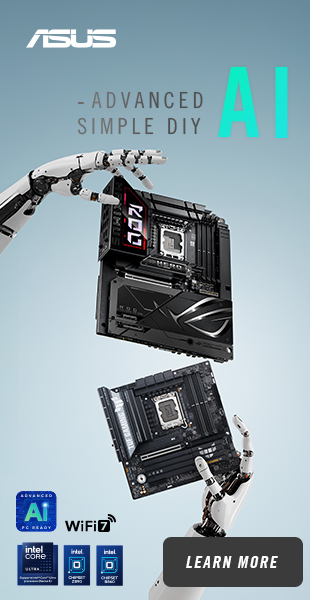
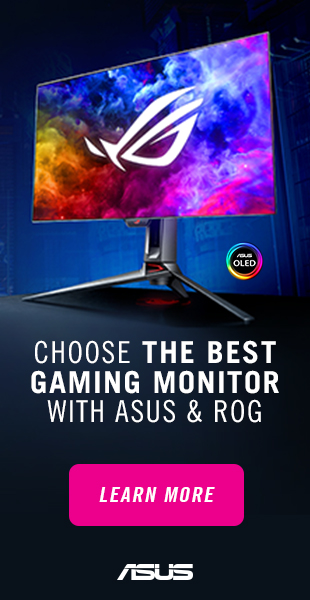

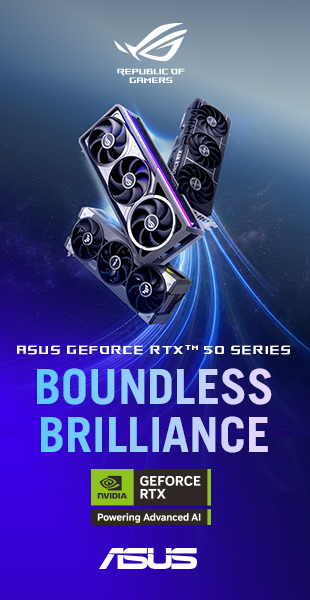
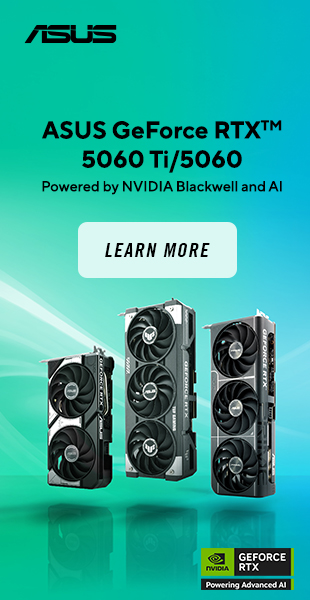
Kaip ir sakiau:) Nvidia numetė dažnį 100Mhz štai ir sprendimas.
nemanau, kad viskas taip ir liks numetant viems partneriams dažnį, bus sukurtas kažkoks HW sprendimas ir marketingas su tais geresniais capasitors.
Numetė dažnį turbūt visiems, tai dabar tie, kurie pirko Asus ir neturėjo problemų, tiesiog turės prastesnį našumą?
Reiklia laukti testų, paprasti žmonės sako, kad sparta netgi kažkiek pagerėjo, nes dažnis stabilesnis ir nešokinėja. Bet, paprasti žmonės gali bet ką rašyti. Palauksim kol patestuos rimti žmonės.
Daug neskaiciau, bet gal zinote ar founders modeliai crashino? as manau situacija paprasta, kas neturejo problemu tai tiesiog atgal atkels tuos 100mhz per koki afterburner. Gal tiesiog per astrus boostas kaip kurios kortoms del silpnesnio maitinimo ir tiek, bet partneriai patys kalti kad neissitestavo normaliai.
founders kiek teko girdėt su šita problema founders nesusiduria…
Aš kažkur mačiau, kad crashino viskas iš eilės (Founders įskaitant), net ir ASUS su gerais kondikais, nes boostas blogai veikė.
Founderio tie kondikai kaip ir daugelio kitų 4 SP-CAP ir 20 MLCC. Ko realiai tikrai užtenka, tik boostas spikino per daug.
Nu jo, tai cia realiai beveik tas pats kad pvz spartink savo plokste kol crashins, ir dar viskas ant isleidimo susidejo. Zodziu biski akmenu nvidia i darza gavo.
Sitas dalykas vadinasi beta testavimas ant klientu 🙂 Del to man pradeda ir nepatikti naujas hardware’as, kad realiai ji paleidzia normaliai neuzbaigta, o po to fix’ina, ir kai baigia fixint jau buna sekanti karta netoli 😀 Na cia per daug sutirstintai, bet is esmes taip yra. Kad iseitu naujos HW revizijos ir nusistovetu SW, tai reikia kokiu 1/2 metu.
As sekanciam kompui rimtai svarstau imti server arba workstation platforma. Sumoki daugiau, nasumo gauni maziau siek tiek, bet bent HW buna praejes normalesne validacija. Tikimybe kad boot’inantis nusiresetins UEFI truputi mazesne 😀
Taip workstation daug geresnis sprendimas. Aišku, aš savo 2920x su rog zenith extreme ne kartą sugebėjau nucrashinti, bet čia pagrinde jau pačio neortodoksiniai metodai.
Sutinku su tuo dėl to dabar sėdžiu su 2950x & 5700(non x). Nors vis tiek lieka neišspręstų problemų. Kompas ne iš pirmo karto įsijungia, bet kai įsijungia „rock stable“
Nu kuris perkame? Bent stabilu turėtų būti dabar 😀
http://www.skytech.lt/geforce-rtx-3090-gaming-trio-msi-geforce-rtx-3090-gaming-trio-24gb-gddr6x-vga-3x-p-521869.html#tabsnav-5
Bent jau aš, net nemąstau 2080ti best waterforce kuri apie 10% lėtesnė keisti į 3080. Manau bus pirmas skip, jeigu 3090ti nebus 🙂
įdomu kaip ten tas reikalas su kondikais atrodo EVGA RTX 3090 KINGPIN Hybrid kortoj, nes overcklokinasi tai ojojoj
Mažas skirtumas tarp kondensatorių, turbinant tarp blogiausios ir geriausios konfigūracijos bus gal 75 Mhz.
Norėtusi nors vieną apžvalgą pamayti su šia korta, kad būtų matomos temp ir oc nauda. Idomu kiek tas 360mm radijatorius duoda naudos.
Kad tas turbinimas mazai jau naudos duoda, gal tiesiog kad ir taip FPS sočiai, arba tik taip atrodo, nes anksciau tai tas spartinimas tikrai jausdavai kad padeda 😀
placebo efektas